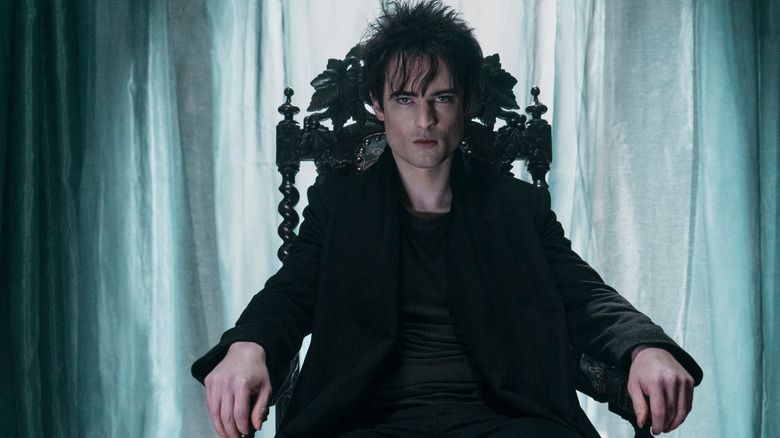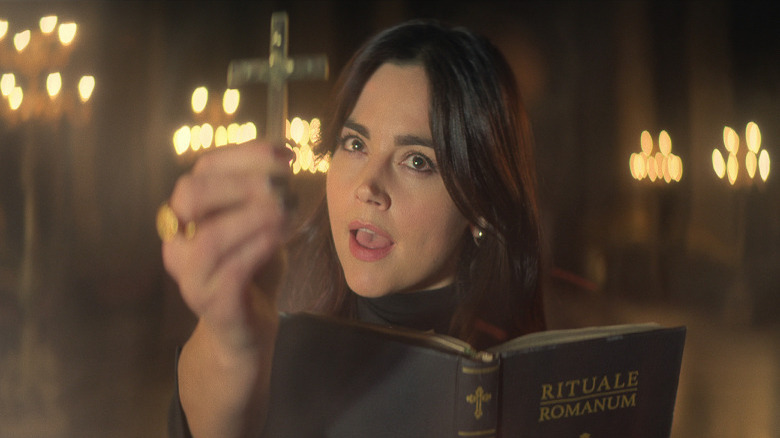Why Netflix's The Sandman Series Has No Connection To The DC Universe
Things are certainly, um, happening in the world of DC. The CW's "The Flash" TV show has been canceled, effectively marking the end of the Arrowverse as we know it; Warner Bros. has elected to shelve its already-finished "Batgirl" film in a move that's sent shockwaves through the industry; and who even knows what's going to come of "The Flash" movie, given the growing number of disturbing allegations raised against its star, Ezra Miler.
In light of all that, one imagines the creatives on Netflix's "The Sandman" TV series are probably breathing a sigh of relief after taking steps to distance the show from the rest of the DC Universe. The original comic books written by Neil Gaiman and illustrated by an all-star team of artists were published under DC's Vertigo label from 1989 to 1996, yet they began with one foot planted firmly in the DC Comics universe. Early issues of the comics even saw the likes of John Constantine and members of the Justice League show up, with the lesser-known DC superhero Element Girl later being featured as the focus of a one-off "Sandman" story titled "Facade."
Eventually, however, Gaiman's comic book series "just sort of wound up wandering off into its own place," as he put it in an interview with Variety. That process only sped up over time, to the degree that, as he kept on writing, Gaiman essentially began to pretend "The Sandman" had always existed separately from the DC universe proper. Or, as he put it:
"Its world joined up more and more with our world and became less and less a world in which costumed crime fighters fly around and so on, which meant that by the time 'The Sandman' finished, it had its own aesthetic which really wasn't the DC Universe anymore."
Out with the old
Most of the DC superhero cameos in "The Sandman" comic books are fairly superfluous to their plot, making it all-too-easy for the TV show to drop them — with the exception of John Constantine. In that case, the Hellblazer has been replaced with another occult detective in the form of Johanna Constantine (a character whose ancestor, Lady Johanna Constantine, also plays a key role in the original comics). Then there's the issue of John Dee, aka Doctor Destiny, a DC Comics super-villain who's just a little too vital to "The Sandman" to be exorcised from the TV series. But at the same time, he's not exactly a household name, either, so his inclusion feels like less of a problem.
This brings us to another matter Neil Gaiman was concerned with while developing "The Sandman" into a TV series with David S. Goyer and Allan Heinberg. "We didn't want a TV show where you felt that you had to have read a whole bunch of comics published in 1988 and 1989 to understand what was going on," he explained to Variety. Gaiman also made it clear Doctor Destiny's presence on the series isn't his way of hinting at future "Justice League" cameos like those in his comic books:
"Well, a) No and b) That hasn't been the lineup of the Justice League for about 29 years, at this point. That bunch disbanded in 1996. No, we're not bringing in the Justice League of 1988."
If anything, the absence of DC connections should only benefit "The Sandman" long-term and aid the show in fully realizing its potential — which, judging by Hoai-Tran Bui's review for /Film, it has yet to do after a single season. You can see if you agree with her by streaming season 1 on Netflix.

